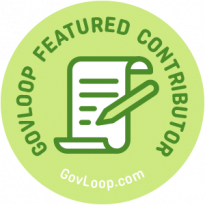Whether due to greater flexibility, mass exodus, or values-driven decision making, careers in 2022 are anything but predictable. Since the pandemic, we have learned to re-evaluate our careers either by choice or necessity. According to a study from O.C. Tanner, 48% of employees are considering an industry career change after COVID-19 settles down (if it ever does).

Consider Your Career as a River
Entrepreneur and innovator Peter Diamandis says the only constant is change, and the rate of change is increasing. Depending on your generation or that of your parents, you may have been taught that climbing the corporate (or government) ladder is the only way to advance. Many of us consider career progression as the “normal route” to take. However, Whitney Johnson, the author of Disrupt Yourself: Putting the Power of Disruptive Innovation to Work, suggests that our career growth is rarely linear. She said in a Dear HBR interview our career transitions move up and down, often calling us to take a step back before we slingshot forward.
Consultant, Bridget Thoreson agrees, calling career rivers a better framework for one’s professional journey. In her article, Forget Ladders, Think of Your Career as a River, she is unapologetic about carving one’s own path with every twist and turn. She opts to let go of the idea that one’s professional destination is a lonely perch at the top. Thoreson’s career journey was not about climbing to the top, but rather making choices that better align with her skillset, passion, and lifestyle.
She offers the following guiding principles:
- Find you flow — Accept that your career ebbs and flows, no matter how slowly. Give yourself the time and the freedom to examine and explore what matters to you and what meets your needs, e.g., compensation, work-life balance, passion or purpose.
- Navigate obstacles — Consider the Kawa Model, which asks how one might want to live their life so that it is more meaningful. Take time to reflect on what “rocks” may be blocking your flow. This mindset may give you the permission to transition to a new career, take a step back and evaluate your current state, or simply to pause and reflect.
- Cooperation, not competition — Do what feels right. We all don’t want to climb the ladder to CEO. Some of us want to work as a team, thriving more as a collaborator than a director. Still others may want to educate others, being fulfilled by seeing others thrive.
Ready, set, flow
Consider my former boss and friend, Dan Bruneau, now of Bruneau and Associates. About 15 years into his career, he worried that the 11 positions listed on his resume made him look like a job hopper. Then an interviewer complimented him on his diverse experience. That was when it clicked. His many twists and turns actually fed his passion to explore new horizons, take on what might have been unlikely jobs, and focus more on what mattered to him rather than climbing a career ladder in the traditional sense. He recently said that “our focus has to be on ourselves much more than a particular job or career path, because the work world will shift in ways we cannot foresee.”
Go with the flow
Today’s career landscape calls us to be agile and flexible regardless of industry. Rather than the traditional path to career advancement, today’s professionals value:
- Telework options
- Purposeful work
- Values-driven job interests
- Work-life balance
The pandemic, along with the subsequent The Great Resignation ,is another indicator that we are far more likely to see an acceleration than a reversal of such trends. COVID-19 exposed the frailty of life. It called today’s professionals to look deep within. Many of us have started to question whether the lives we lead are consistent with our long-term values and priorities. We were left asking,”is my current career path consistent with my values and goals?”
So where do we go from here?
If you are an employee:
- Decide what you want to do by listing career options and identifying your skills, values and interests. Be open to training that may not seem relevant but could enhance your job performance.
- Create your branding and marketing plan. Develop achievement stories, essentially a personal commercial you want to share with recruiters.
- Implement your plan through networking, social media and professional contacts. Continue developing additional skills.
If you are an employer, consider these ideas:
- Develop work cultures that allow employees to make meaningful contributions to the business while also fulfilling their own needs.
- Invest in a learning culture where seasoned professionals mentor younger staff.
- Embrace automation and digital transformation that empower human potential for creative and productive enterprise.
Never before has the workplace been so diverse, with its five generations. The pandemic has enlightened us. We now look for balance among job satisfaction, monetary gain, and lifestyle. So now is the time to grab your paddle and explore along the way and until you reach your ocean.
Stacie M. Rivera, PhD, MPH, APR, has more than 25 years’ experience in communications, public affairs, and public policy and administration in the federal government. She holds several accreditations and certificates including Accreditation in Public Relations (APR) from the Public Relations Society of America (PRSA), Integrated Marketing Communications certificate from PRSA, Diversity, Equity and Inclusion certificate from the University of Florida. She is a graduate of the Excellence in Government Fellows Program. Dr. Rivera is an instructor with the West Virginia University College of Media Online Programs and with the School of Communication & Design, Loyola University New Orleans.





Leave a Reply
You must be logged in to post a comment.